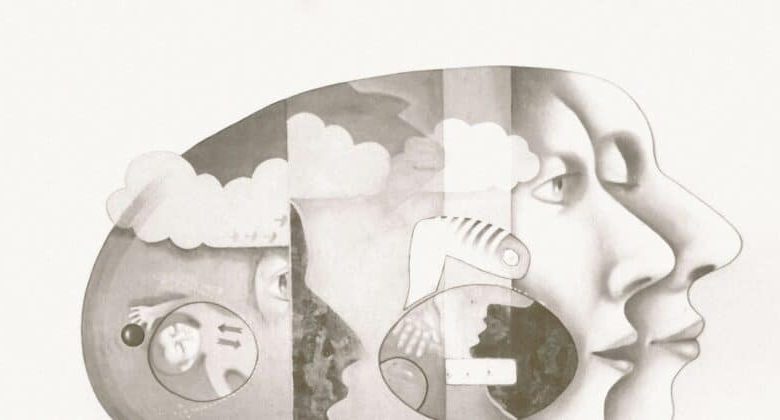What Causes Aggression? Brain Chemistry, Childhood & Stress Explained

Aggression doesn’t always equal explosive reactions. Along with traditional outbursts that might include name-calling, yelling, and physical abuse, aggression as a phenomenon also includes passive-aggressive behaviors like sarcasm and stonewalling. Or it can be fully internalized when instead of lashing out at others, one engages in self-sabotaging behaviors, like self-harm and substance abuse.
Here is what forms aggression and why you might be prone to particular types of aggression based on your brain chemistry, past experiences, and environment.
What does aggressive behavior look like?
At first glance, that sounds like a very easy question to answer. But does it? 🧐 In reality, there are more than one answer to what causes anger issues, and from what we see, anger wears many hats: it can be active, passive, or internalized. What unites them all? All these behaviors mean to assert control, protect oneself, and release tension.
And from the rising number of mental health apps and reviews on them online, including the Liven app review, it’s clear that a huge number of people are looking for help to find a healthier way to cope with difficult emotions. Yes, you’re not alone in your struggles 🤗.
So, here are the unhealthy types of anger that one might deal with:
- Active aggression. This is the definition of aggression: direct, clear, and outward expression of hostility accompanied by verbal and/or physical abuse. It’s often impulsive and difficult to control;
- Passive aggression. This type is very common for people who haven’t been taught how to hold difficult conversations, as they grew up with emotionally unavailable parents who disregarded their emotional needs. Stonewalling and sarcasm are the most popular types of passive aggression;
- Internalized anger. If you’ve been taught that anger is a ‘bad’ emotion or you had to hide and suppress it as a child in order to survive, you have learned to turn that anger inward, and it comes out as self-punishment. Internalized anger looks like self-sabotage, self-criticism, and in extreme cases as self-harm and substance abuse.
Well, here are the factors that might have influenced how you express your aggression.
Biological causes: Aggression is in your brain structures, DNA, and brain chemistry
We hate to bring it to you, but your aggression levels are partially a result of factors you can’t control: your biology.
Oversensitized amygdala
Amygdala is your brain’s threat detection center. In people with high levels of aggression, the amygdala is hyperreactive and fires alarms when no danger exists. The challenge? Your amygdala works faster than your prefrontal cortex, the brain’s area for self-regulation and reasoning. This perfectly explains why a minor misunderstanding in the communication might feel like a full-on attack.
Weakened prefrontal cortex
If the amygdala is the gas pedal, the prefrontal cortex is the brake. But when the prefrontal cortex is underdeveloped, impaired, or weakened by chronic stress, it struggles to regulate the amygdala’s alarm signals.
Hormones that turn up the heat
Brain chemicals like serotonin, dopamine, and norepinephrine define the intensity of your aggression. For example, low serotonin levels (especially in men) lead to higher irritability and poor impulse control. The same goes for excessive dopamine levels (dopamine is the hormone of reward and motivation) or high testosterone combined with low cortisol, the stress hormone, levels.
Genetic predisposition
Aggression runs in families not just through behavioral modeling but also on a deeper level — your genes. Twin and adoption studies suggest that 40–50% of aggressive tendencies may be inherited.
Anyway, you’re not doomed, as supportive parenting and therapy can buffer against risks.
Environmental factors: How childhood, society, and stress mold your aggression
Biology gives you a predisposition, but it’s your environment where you grew up that activates it.
Family dynamics and upbringing
If yelling, hitting, and manipulation were a part of your childhood surroundings, you might have subconsciously learnt that these behaviors are acceptable. On the other hand, if your caretakers had an unhealthy habit to dismiss emotions or avoid conflict entirely, you, now as an adult, might have developed a tendency to express your anger passively or completely suppress it.
Social modeling and peer influence
The social learning theory says that the behavioral models we see heavily influence our decisions. In other words, you mirror the actions of others around you.
And if your peers and media models used to express themselves and solve their problems with aggression (for instance, online trolling, physical violence, and school bullying), then you’re more likely to adopt these behaviors.
Cultural and societal norms
Some cultures sell the idea of aggression as strength and an admirable trait, an act of ‘standing your ground’ and protecting your social status. Others, on the contrary, discourage it (for instance, collectivist societies where anger threatens group harmony), and, as a result, people in such societies are more prone to passive or internalized aggression.
Meanwhile, gender expectations also matter: men are more encouraged to express their anger, while women are pressured to hide it.
Chronic stress and socioeconomic pressures
Poverty, unsafe neighborhoods, job insecurity, or systemic discrimination are all factors that keep one’s nervous system in survival mode. Your stress hormone levels are high 24/7, and that has a pretty toxic effect on your brain: its emotional regulation and impulse control capabilities weaken over time in such conditions. In the end, such a state leaves little room to tolerate frustration.
📚 Interesting fact: Studies show that people living under chronic financial stress are nearly 60% more likely to display hostile or aggressive behaviors in daily life.
Final thoughts
Multiple factors may shape aggression — biology, childhood, or life stressors — but one thing stays the same: aggression is not just a ‘bad behavior’ to correct. Oftentimes, aggression is a tip of the iceberg, a sign of deeper wounds to heal. Thankfully, awareness, compassion, and the right support can help one rewrite their story.




